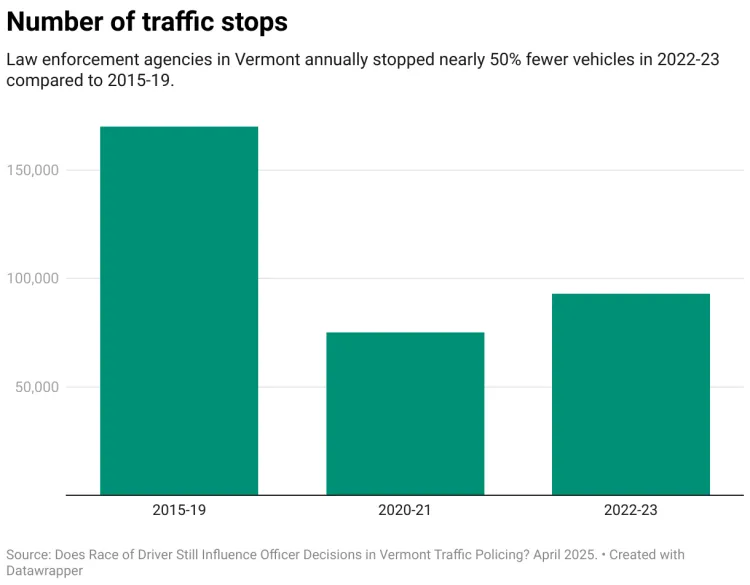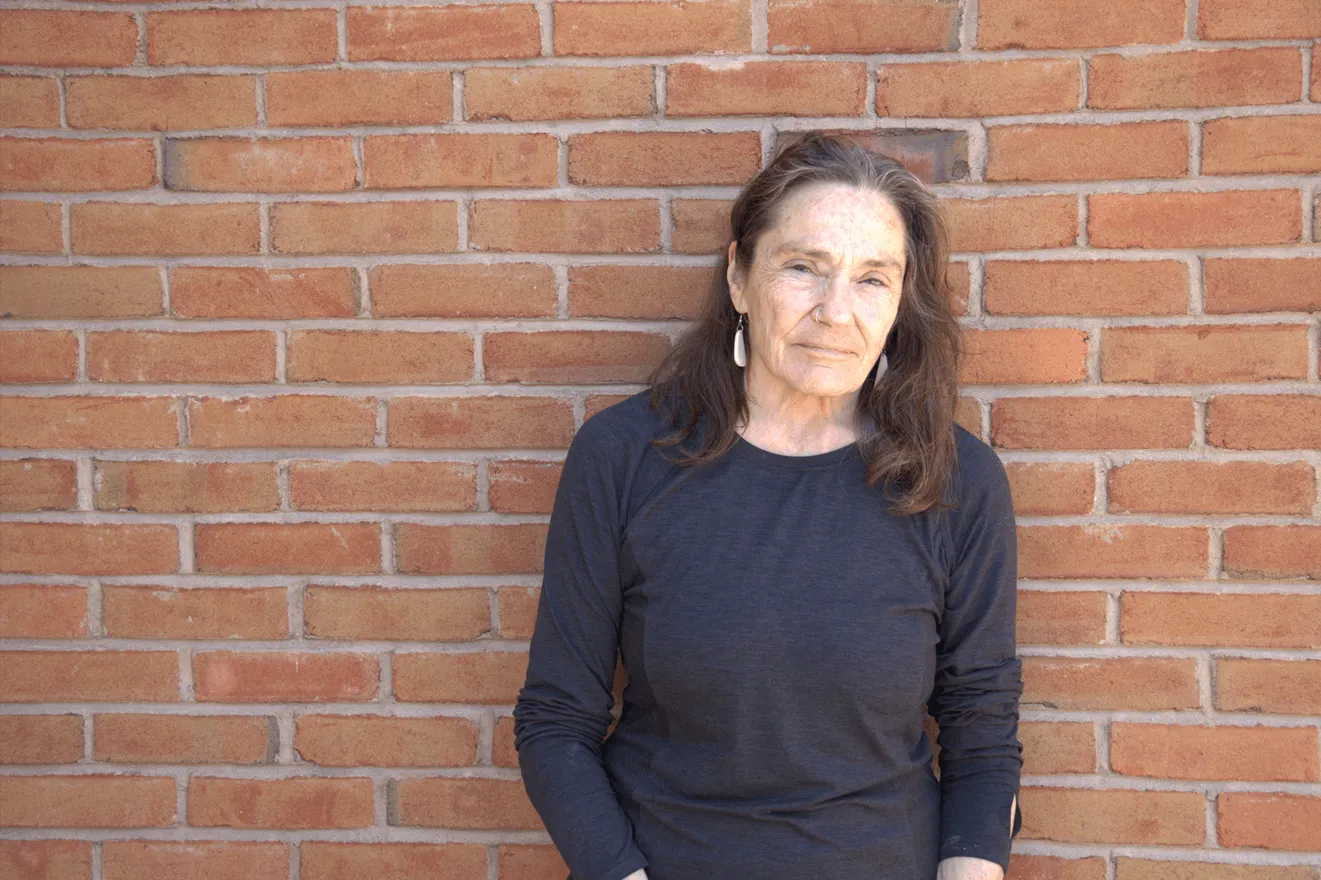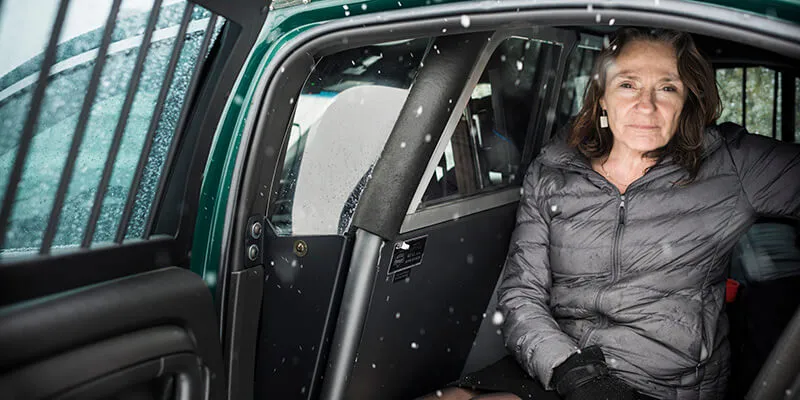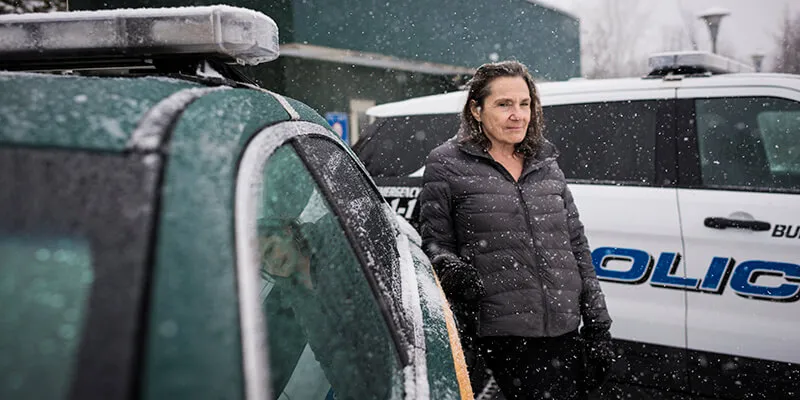Black and Hispanic drivers in Vermont continue to be stopped and searched at higher rates than white drivers. That’s according to new research examining thousands of traffic stops across Vermont.
The research paper is the latest update to an ongoing analysis of racial disparities in traffic policing data across Vermont led by University of Vermont Economics Professor Stephanie Seguino, Cornell Professor Nancy Brooks and Data Analyst Pat Autilio.
Previous statewide analyses were released in 2017 and 2021. They spurred conversation and, in some cases, racial bias training at some Vermont law enforcement agencies. This update adds data from 2020-23 and examines both the impact of the COVID-19 pandemic and continues to investigate whether Black, Hispanic and Asian drivers in Vermont face racial disparities in traffic policing.
“During COVID there was a reduction in racial disparities in arrests and searches,” said Seguino, who is also a fellow at the Gund Institute for Environment.
Black drivers were 20% more likely to be arrested than white drivers in 2022-23, down from 56% in 2020-21. Black drivers were 100% more likely to be searched in 2022-23 compared to 126% more likely in 2020-21. Arrest and search rates disparities for Hispanic drivers also decreased a few percentage points between 2020-21 and 2022-23.
However, as total traffic stops began ticking back up in 2022-23 that modest progress in decreasing racial disparities began to unravel.
The report finds that over-stopping of Black and Hispanic drivers continues. In 2022-23, Black drivers were stopped at a rate 30% higher than would be expected, given their share of the driving population. Over-stopping of Hispanic drivers is even higher—they are stopped at double their share of the driving population. There has also been an uptick in over-stopping of Asian drivers since the end of the pandemic.
Although the disparity has decreased, police continue to search Black and Hispanic drivers at almost double the rate of white drivers. But, according to co-author Nancy Brooks, “The proportion of searched Black drivers found with contraband was a third lower than for white drivers in 2023, the largest state-level difference we have seen in our years of analyses—and an indication of racial bias in the decision to search.”
Etan Nasreddin-Longo, co-director of fair and impartial policing and community affairs at Vermont State Police acknowledged the findings can cause some discomfort but he stressed their importance.
"These reports provide an important service to the entire state,” he said. “In addition to being well-researched and readable, these reports provide a center to extremely important discussions in Vermont concerning racial disparities in policing.”
COVID Drop
The data also show the number of traffic stops plunged during the pandemic.

The study also found many Vermont police departments continue to stop cars at a rate far above the national average, although at rates lower than in previous years. In 2022-23, the national stop rate average was 52 per 1,000 residents. Vermont’s was almost 2.5 times higher at 133 per 1,000 residents.
The authors draw attention to the wide variation in how agencies police, underscoring that individual agency policy influences traffic policing patterns and racial disparities.
Moving forward, Seguino, Brooks and Autilio said data alone has not been enough to eliminate racial disparities. The authors suggest Vermont lawmakers could take a more proactive approach to law enforcement training to reduce racial disparities in traffic policing.
Seguino is available for interviews beginning at 1:30 p.m. EST on Thursday, May 1.


